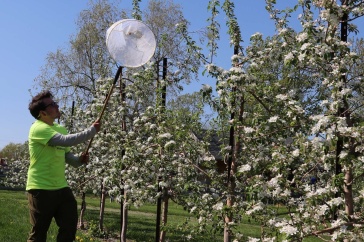Treating Coccidiosis
In cattle, coccidia protozoa is a parasite that attacks the intestinal tract of infected animals, feeding on and rupturing the intestinal lining. The parasite then passes its eggs on through the feces of infected animals. The disease typically affects calves, from 3 weeks to 1-2 years old. Stressful conditions, like being transported, exposure to extreme weather and wide fluctuations in temperature, can make calves more susceptible to the disease. During infection, resulting damage to the intestinal lining can inhibit nutrient absorption, thus slowing or stopping growth in young cattle.
Common preventatives for coccidial infections, like the feed-grade antibiotic monensin, are banned in many countries, including by the European Union nations, for use in cattle. In the U.S., monensin is commonly used as a feed supplement at conventional dairies and as a coccidiosis preventative.
With an average dairy herd size of 100-150 animals on a New England farm, even a few heifers becoming ill can have serious operational and financial impacts, especially when the disease infects calves. One such disease is coccidiosis, which affects both livestock and poultry farms worldwide. Commonly found in calves and heifers, the disease causes diarrhea, internal bleeding and, if left untreated, death, and it accounts for $400–$700 million in annual losses within the global cattle and bison industry. However, a new supplemental preventative for coccidial infections may offer an alternative to the antibiotics commonly used to treat the disease, according to new research from the New Hampshire Agricultural Experiment Station (NHAES).
Station scientist Pete Erickson, professor of dairy management in the UNH College of Life Sciences and Agriculture, has found evidence that the compound sodium butyrate—a nutrient that people obtain by consuming beans, peas and other legumes, but that can also be added to animal feed—could be used as a coccidiosis preventative in cattle. Erickson and a team of UNH researchers–including professor Tom Foxall, graduate student Katrina Klobuchar and undergraduate student Rachel Badger–reported on their findings in a recent paper in the Journal of Animal Science.
“Sodium butyrate in animals has an effect on epithelial, or intestinal, development and health,” described Erickson, who began investigating the potential uses of the compound in dairy operations in 2016. “It improves the integrity of the epithelial lining. Conversely, coccidiosis destroys the lining – and if it’s destroying that lining, which is where nutrients are absorbed, the infected animal is not going to grow.”

To test the effectiveness of the butyrate compound compared to the known anticoccidial parasite effects of monensin, researchers exposed lab-grown E. bovis sporozoites—the infectious agent of the parasite—to sodium butyrate. The researchers found that the antibiotic and the sodium butyrate treatment both reduced the number of live sporozoites and also similarly decreased the amount of cellular damage to the bovine epithelial cells.
In addition to investigating the effect sodium butyrate has on infected bovine cells, the scientists also assessed the possible treatments on the sporozoites alone, described Foxall, a professor of biological sciences in the UNH College of Life Sciences and Agriculture.
Ultimately, what they found was that when applied to the isolated form of the sporozoites, the sodium butyrate was not very effective. However, the butyric acid was just as effective at killing the sporozoites as monensin was, meaning that when sodium butyrate breaks down in the calves’ stomach, the resulting acid will fight the infection and/or improve intestinal health.
The butyric acid was just as effective at killing the sporozoites as the antibiotic monensin was, meaning that when sodium butyrate breaks down in the calves’ stomach, the resulting acid will fight the infection and/or improve intestinal health.
“Our results demonstrated that butyric acid had similar anticoccidial activity as the monensin and decreased the damage from sporozoites to the bovine epithelial cells,” added Foxall.
Used as a feed supplement for calves, sodium butyrate can also aid in the developmental growth in young cattle, according to studies. Erickson previously published research on the advantages of feeding sodium butyrate to post-weaned (no longer nursing) heifers that haven’t given birth yet. Additionally, the compound is known to support gut health and bacteria in humans. Sodium butyrate has not yet received FDA approval as a coccidia preventative for cattle.
This material is based on work supported by the NH Agricultural Experiment Station through joint funding from the USDA National Institute of Food and Agriculture (under Hatch award numbers 1016574) and the state of New Hampshire. Funding also came from Adisseo USA, Inc. (Alpharetta, GA, USA).
You can read the published article, The effect of sodium butyrate, monensin, and butyric acid on the viability of Eimeria bovis sporozoites and their degree of damage to a bovine epithelial cell line, in the latest issue of the Journal of Animal Science. The work is co-authored by Erickson, Foxall, graduate student Katrina Klobuchar and undergraduate student Rachel Badger.
-
Written By:
Nicholas Gosling '06 | COLSA/NH Agricultural Experiment Station | nicholas.gosling@unh.edu



















































